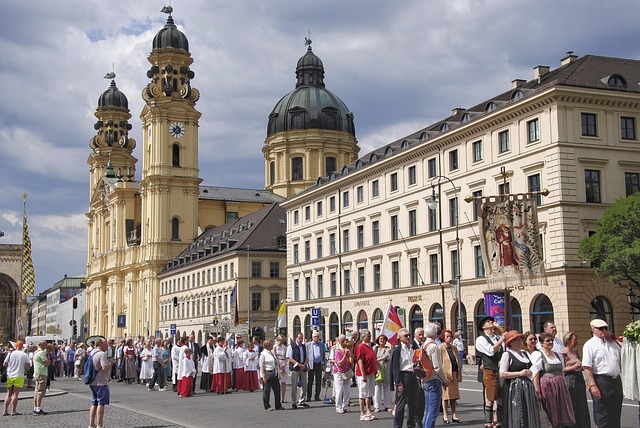The Corpus Christi procession is a cherished and revered tradition that transcends mere ritual, inviting participants to engage deeply with their faith and community. Occurring annually in many Christian churches, particularly within the Catholic tradition, this event celebrates the doctrine of the Holy Eucharist—the belief in the real presence of Jesus Christ in the consecrated elements of bread and wine.
From early morning, a palpable sense of anticipation permeates the air. The faithful don their best attire, reflecting the joy of the occasion. As the sun rises, vibrant floral decorations adorn the streets and altars, transforming ordinary spaces into sacred sites brimming with beauty and devotion. The atmosphere buzzes with excitement as families gather, ready to partake in the ceremony that unites them in their shared beliefs.
At the heart of the Corpus Christi procession is the revered Eucharistic host, carried in a beautifully adorned monstrance. This procession often winds through the community—past homes, schools, and parks—reminiscent of Jesus’s journey on Earth. As the procession progresses, hymns and prayers fill the air, creating a tapestry of sound that resonates in the hearts of participants. Children, dressed in white, sprinkle flower petals along the path, symbolizing purity and their joyous embrace of faith.
The act of walking in the Corpus Christi procession is more than a physical journey; it’s a reflective pilgrimage that fosters a deep spiritual connection. This annual event serves as a reminder of community bonds, intertwining the threads of faith, love, and a shared commitment to live according to the teachings of Christ. For many, it offers a rare opportunity to step outside the hustle of daily life and find solace in the shared celebration of divine presence.
Local parishes often prepare elaborate altars along the route, each one representing a unique aspect of faith, culture, and community. These altars invite contemplation and serve as focal points for prayers and blessings. The vibrant displays not only beautify the streets but also serve as testimonies to the diverse expressions of faith within the community. Each bloom, candle, and sacred symbol speaks volumes about the love and dedication of the parishioners, inviting passersby to pause and reflect.
In regions where the Corpus Christi procession is deeply rooted, it becomes a significant social event, drawing participation from all walks of life—young and old, seasoned parishioners, and curious onlookers alike. It bridges generational gaps, with elder parishioners sharing stories of past processions, passing on the tradition to younger generations. This communal aspect highlights the importance of collective worship and the shared identity formed through faith and tradition in a rapidly changing world.
Additionally, the Corpus Christi procession acts as a powerful reminder of the need for charity and service. In many communities, it emphasizes the importance of outreach, encouraging participants to reflect on their actions and commitments to those in need. The collective prayer and procession inspire attendees to carry forth the spirit of love and compassion beyond the church walls and into their daily lives, fostering a culture of support and service that resonates well after the celebration ends.
As dusk settles and the last rays of light fade, the feelings of reverence and connection linger—echoes of joy shared through song, prayer, and togetherness. The Corpus Christi procession stands as a testament to faith—a continuous thread that binds community together, reinforces beliefs, and inspires a life lived in service of one another. It’s more than a ritual; it’s an experience that embodies the heart of faith, resonating through time and generations, reminding us all of the profound beauty of shared traditions.




